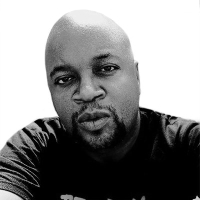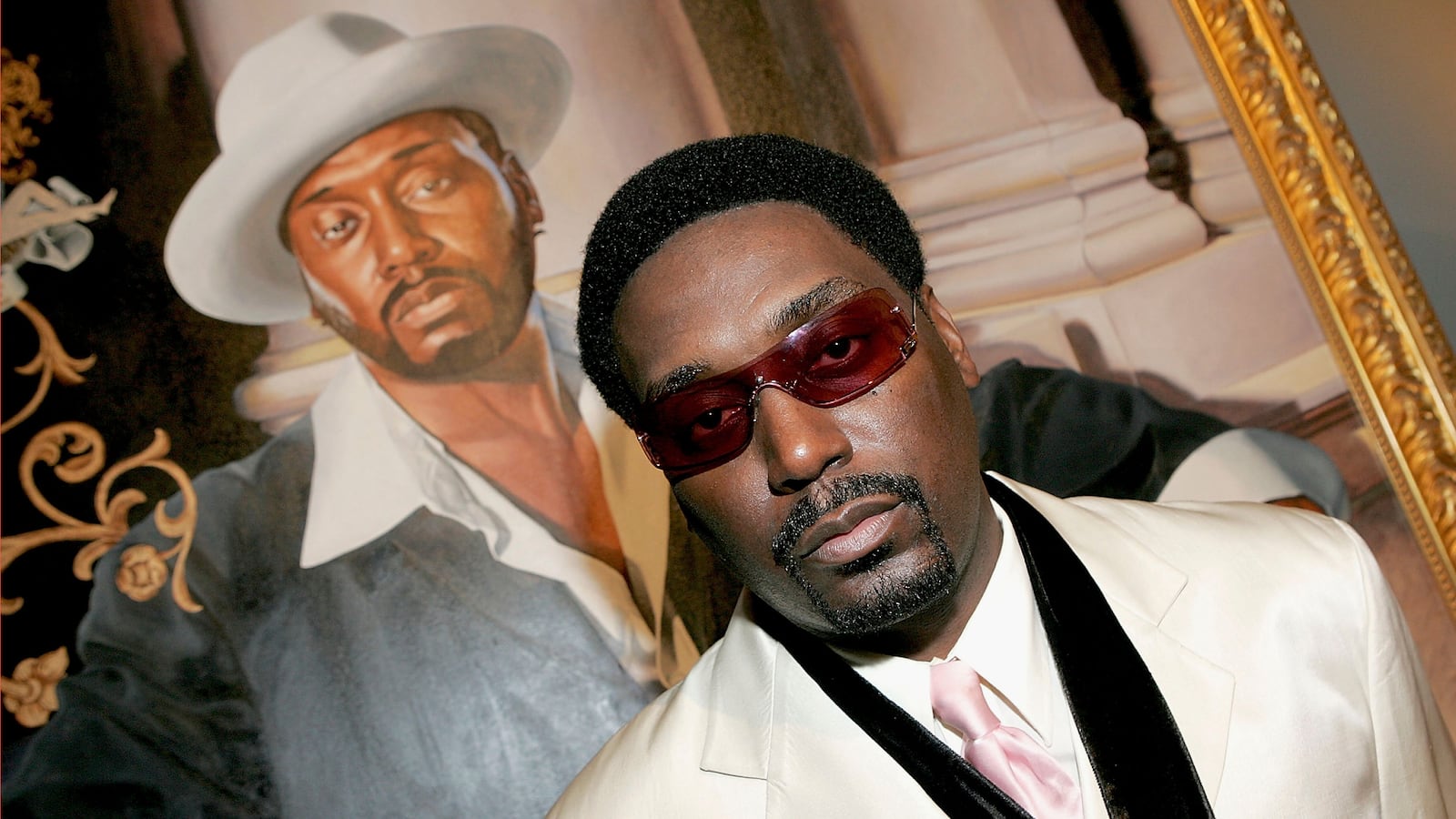Big Daddy Kane’s place in rap’s upper echelon is irrefutable.
He’s among the most fluid rhymers to ever hold a mic—clever in wordplay and dexterous in flow, he has those rapid-fire bars that sound like flurries of verbiage unloaded at the listener, and those slower, quotable lines that pepper so many radio hits that defined hip-hop’s Golden Age and the vibrancy in Black radio of the Do the Right Thing era. His debut album, Long Live the Kane, dropped in June 1988, and showcased everything the man born Antonio Hardy does well on record: ferocious rhyme showcases, hooky radio rap and cheesy lover come-ons. He arrives fully formed on his first album.
Kane has one of hip-hop’s more enviable legacies. His first two albums are a dizzying one-two punch showcasing the lyricist at his most confident and inspired, as Kane goes from jaw-dropping rhyme sprees like “Set It Off” to more topical tracks like “Young Gifted & Black.” His work with Marley Marl on Long Live the Kane is among both men’s best—with Marley delivering his first truly classic album and Kane announcing himself as an emcee par excellence, alongside contemporaries like Rakim, KRS-One and Slick Rick. Production on It’s A Big Daddy Thing, the 1989 follow-up, would be more varied (Prince Paul, Teddy Riley, Easy Moe Bee and Kane himself helmed the album, along with Marley) and Kane would delve deeper into his bag of tricks, revealing a rapper at the height of artistry and in full command of his musical voice.
But Kane’s commercial and creative decline was swift and steep.
Taste of Chocolate, released in 1990, was less inspired than its predecessor, with Kane leaning more heavily into both his loverman persona and tendency to tether his image to the kitschier aspects of the previous generation’s avatars of pimped-out cool (Barry White and Rudy Ray Moore are among the album’s guest stars). The songs weren’t as strong, the presentation wasn’t as fresh, and by the time Kane released 1991’s new jack swing-laced Prince of Darkness, it seemed obvious that he’d lost a step creatively. Peers like Eric B. & Rakim, LL Cool J and Kool G Rap opened the 1990s with some of their most inspired work, and a newly-solo Ice Cube had joined them near the top of hip-hop’s hierarchy; Public Enemy was on the back end of what was still a potent album run; KRS-One successfully navigated the transition from the Boogie Down Productions moniker and era into what would be a strong solo career; and EPMD was delivering their most era-defining material in the years leading up to their infamous 1992 breakup. By the time Kane released Looks Like A Job For… in 1993, it looked like he hadn’t been that guy in a while.
“Well, the string of releases essentially ended after the first four albums. We did Long Live the Kane and I caught the bug,” Kane told HuffPost in 2016. “I realized pretty much everything I did wrong with Long Live the Kane and went right back in and did It’s a Big Daddy Thing, because now I had a more universal approach. I think Long Live the Kane was pretty much a real boxed-in mindset with me just doing what I represented in the hood.”
In that interview, Kane said that the drop-off in his material was the result of his own frustration and indifference with Cold Chillin’/Warner Brothers. Following his first two albums, he essentially rushed through releases.
“After that, I was unhappy with the label, so I dropped two trash albums to try to hurry up and finish up my 5-album deal so that’s why they were coming so fast after that,” he added. “I was trying to hurry up and get out of the deal. I guess Warner Brothers caught on after Prince of Darkness and they just stopped me and made me freeze for a year.”
Even as Kane’s music began to suffer, his status as a rap game sex symbol was only rivaled by LL Cool J. He’d dropped “Smooth Operator” and “I Get the Job Done” on It’s A Big Daddy Thing and subsequently evolved into a silk-robe-wearing lothario by the early ‘90s. In an era when hip-hop was becoming ever-more hardcore, Kane presented a version of b-boy sexuality that was macho without being hyper-aggressive or domineering, and he courted the public’s sexual gaze in a way that was boldly out of step with other revered rappers of the time.
And he paid a price for it. Kane’s 1991 Playgirl spread is one of hip-hop’s most notorious moments. Despite concern from his label, Kane agreed to do the spread and said he’d wanted to do it for his female fans.
“There’s no shame,” he told the Associated Press in 1992. “First of all, I wasn’t born with any clothing. Shame is something that’s man-made. I just wanted to do something different, and I’m not scared to take off my clothes.”
He reflected on the Playgirl shoot in 2013.
“It came about by joking with my publicist at the time, Gene Shelton,” Kane told The Daily Beast. “He said, ‘We did everything from Right On to Essence. What’s left?’ I said, ‘Playgirl?’ So we pursued it and the shoot was wonderful. A first for hip-hop. A lot of my male fans thought it wasn’t a good look for me. But as for the female fans, I think that month was the magazine’s highest sales for black women between the ages of 18 and 25. What can I say? I like breaking ground and exploring new things.”
The Playgirl shoot was a step beyond anything even LL Cool J had done before, and Kane followed it with another moment of notoriety: his appearance in Madonna’s 1992 book SEX. Posing in sexual photos with Madonna and supermodel Naomi Campbell, Kane had reached a very rare space in pop culture—but it was one that left fans confused and critical. And those two moments had occurred with a particularly ugly rumor lingering in the background of Big Daddy Kane’s career in the early ‘90s.
There were those out-of-nowhere whispers that Kane was HIV positive. The gossip started in New York City and spread amongst rap fans around the U.S.
“AIDS hit rap back in ’89/’90 when a rumor gained momentum,” dream hampton wrote back in 1996. “The streets of New York City were abuzz with news that Big Daddy Kane was dying of AIDS. That he’d been a closeted bisexual playing straight playboy all along. The rumor proved to be untrue but fatal to Kane’s career. In a moment that was embarrassing for us all, Kane stood onstage at a free concert organized to register voters in Harlem and declared his negative status and his heterosexuality. His career never quite recovered from that moment.”
In a 2009 article called “Scared Straight: Hip-Hop, Outing and the Pedagogy of Queerness,” Marc Lamont Hill revisited the backlash that occurred once those Kane AIDS rumors began circulating. “Given the dominant belief that HIV/AIDS was a gay disease, public attention quickly shifted from Kane’s health to his sexuality: Did hip-hop have its first gay MC? Was he gay or bisexual? Did he catch the disease from another rapper?” These and other questions chased the rumor throughout the city’s boroughs and into urban spaces throughout the country. Further enhancing and complicating the rumor was its apparent irony. In addition to being a lyrical giant, Big Daddy Kane was hip-hop’s playboy extraordinaire. With good looks, braggadocios lyrics, a flashy persona, and even a pimp-like name, Kane’s very identity signified a carefully crafted and extravagantly performed masculinity. After the rumors began to circle however, Kane’s image was placed in serious peril.”
Kane’s uniquely bold approach to rap-sex-god status wasn’t entirely without concession to the most regrettable posturing of his era. He didn’t seem to want to buck the sex-rap status quo in terms of tearing down bigoted macho-ism. Like so many rappers, Kane wallowed in standard-issue homophobia and misogyny on tracks like “Pimpin’ Ain’t Easy,” but it seems clear that Kane represented something that was threatening in terms of Black manhood, sex and sexuality. He broached taboos in a way the game wasn’t ready for. But he did it while his music was at a lull in the early ‘90s. What may have been celebrated as boldly provocative was read by some as desperate.
Reginald Dennis of The Source said at the time that Kane had lost the people. “It would almost be funny if he didn’t take himself so seriously,” Dennis said. “He already had a reputation with the ladies as being a sex symbol, but he didn’t have to cross the bridge into being a Luther Vandross where he’s turning his back on the street.”
When they occurred, Kane’s forays into modeling weren’t generally hailed as anything resembling groundbreaking—not by the hip-hop media that was now sniping at him or by any mainstream platforms that had only barely acknowledged him even at his best. But Kane heard the “streets” chatter, and there was a sense that he was about to lose his audience completely. His label forced him to slow down before releasing …Job For in 1993.
“I was glad they did because at that point in time I started realizing that the streets were saying, ‘Yo, they say you fell off. You wack.’ I had time to really regroup and get all the right producers like Track Masters, Easy Mo Bee, Large Professor and really do a good Kane album,” he told HuffPo.
That album could have restored some of Kane’s career luster—much in the way LL’s Mama Said Knock You Out resurrected his credibility in 1990—but it happened a little too late.
“After the album came out I think I messed it up. I don’t blame it on Warner Brothers. I don’t blame it on the producers, I think it was my fault,” Kane said in 2016. “Looks Like a Job For... I think is a great album production-wise and structure-wise. I think that it was me who made the mistake because I was spitting a lot of dope rhymes, but I didn’t realize that with artists like Method Man and Biggie and Nas, the flow had changed. Cats were behind the beat more, they weren’t that rapid-fire like I was accustomed to doing so I think my style was outdated.”
Kane would release Daddy’s Home in 1994 and Veteranz Day in 1997, but so many years removed from his ‘89/‘90 pinnacle and with those lukewarm releases and changing times, Kane saw his stature slip. Even as LL Cool J, KRS-One, Heavy D, Salt-N-Pepa and the Beastie Boys enjoyed ongoing success and visibility, Kane faded to hip-hop’s fringes. Over 20 years later, he hasn’t released a new album.
But Kane’s legend has remained intact. A show-stopping performance at the 2004 VH1 Hip-Hop Honors remains one of the high points of that semi-annual event, he’s become one of the game’s most raved-about live acts, and his February appearance on NPR’s Tiny Desk series was masterful—with Kane and his band grooving through classics like “Ain’t No Half-Steppin” and “Raw.”
“I love to see it grow and to see it continue on,” Kane told the audience. “I hope everybody out here is supporting hip-hop and trying to make it continue on. I’ve seen a lot of biased stuff going on about how, ‘This is not hip-hop,’ and ‘This is real hip-hop.’ But I mean, you never know what floats somebody’s boat. Whatever form of hip-hop you like, man, love it and keep it going. Keep it strong, make sure it stays powerful—because there’s always gonna be different ways of presenting something and expressing yourself.”






